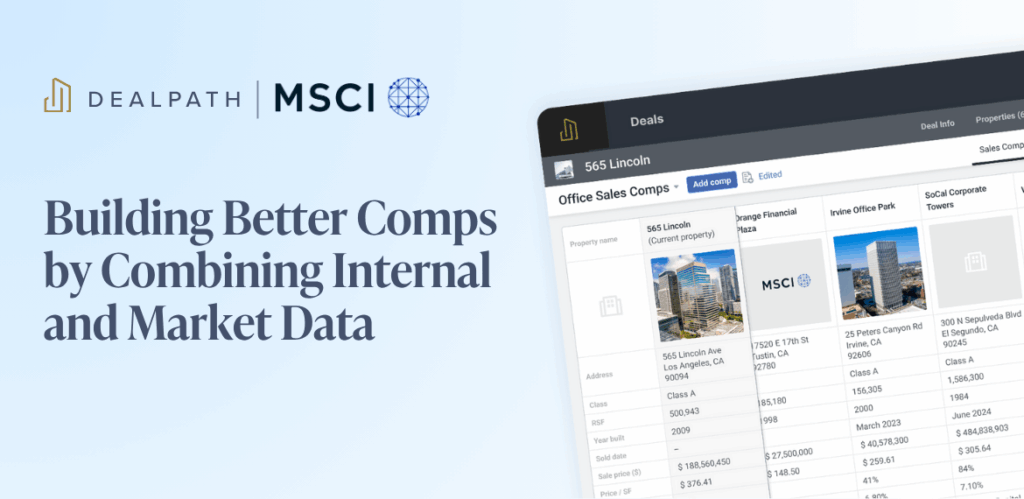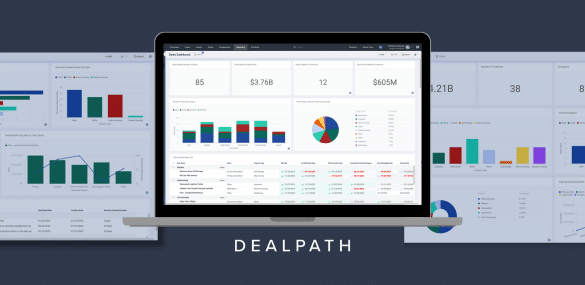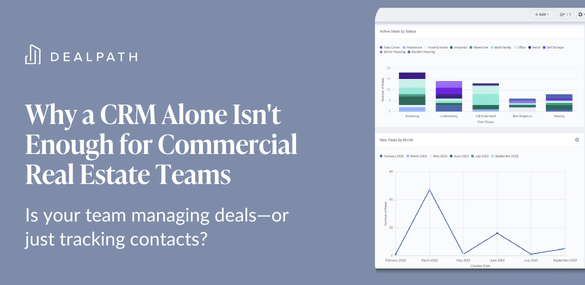Managing your commercial real estate deal pipeline is a critical aspect of the firm, yet effective pipeline tracking and collaboration often prove to be a difficult task. CRE teams often create and utilize a pipeline tracking report, typically an Excel spreadsheet file, to track the deals they are currently prospecting and actively acquiring. Through this report, team members can monitor the progress of the deals through their pipeline and track specific high-level deal information. Let’s take a look at a common way teams bucket acquisition deals as they progress through their pipeline:
- Prospecting – Properties received from broker relationships or researched independently that the firm may visit and perform light, initial underwriting on
- Letter of Intent Submitted – Deals the firm submitted an offer on
- Under Contract – Deals with an existing binding contract progressing through the underwriting, due diligence, and closing phases
- Closed – Deals that a firm has successfully acquired (these properties typically move on to their the asset management team)
- Dead – Deals the team prospected but did not move forward on for various reasons, moving to Dead after any stage of their pipeline
- Tracking – Deals that the team may not be actively pursued, but are good to know for various reasons (building comparables, understanding market trends, etc.)
While deal statuses provide informative, high-level information on deals, effective pipelines should also include relevant deal and property information along with critical team deadlines. In order to compete for each deal, teams must consider tracking the call for offer dates, PSA execution deadlines, due diligence expiration dates, and closing dates. Including this data allows team members to easily see the most important metrics and analysis on deals, and gives investment teams the ability to quickly share information with executives who wish to understand the landscape of the deals the firm is participating in. For executives, it is critical to stay abreast of all the prospecting and closing activity as well as what deals are missed or passed on. This level of data awareness enables firms to identify consistent bottlenecks in their diligence process. Reducing these roadblocks inevitably leads to more effective deal execution, which increases the pipeline, which then enables the firm to prospect and close more deals.
In our discussions with CRE firms who are looking for smarter ways to manage their pipeline, the two most frequently heard issues include pipeline collaboration and pipeline reconfiguration as their company evolves over time. The challenge with leveraging a static document to track and share information across a small or large team is that only one team member can edit the pipeline document at a time. Duplicate versions of the same document lead to inefficiencies and information never making it to the appropriate party. Additionally, as firm’s processes and executives change over time, there’s no simple way to change the current information being tracked on the pipeline report. This leads to teams spending hours digging through supplemental spreadsheets to add historical data to their pipeline report, much of which is inaccurate.
These inefficiencies have been top of mind for us at Dealpath since we began building our platform, especially for CRE firms. We designed and constructed Dealpath on the foundation that enabling teams to effectively track their deal pipeline is the first necessary component to achieving success in closing the right deals for the firm. With Dealpath, customers are able to create a single or multiple personal or shared pipeline reports consisting of different information that they can effectively collaborate on from anywhere with their team. They’ve said goodbye to adding a “v2, v3, v4…” to the end of their excel document names and wondering if they are looking at the most up-to-date version. Additionally, firms can reconfigure their pipeline report by adding or removing data with just a few clicks as their needs change over time.
![]()
We’d love to hear from you to explore ways your team can adopt a pipeline tracking process that allows your firm to better document and collaborate on your real estate deal pipeline as you strive to gain a competitive edge in the industry.



